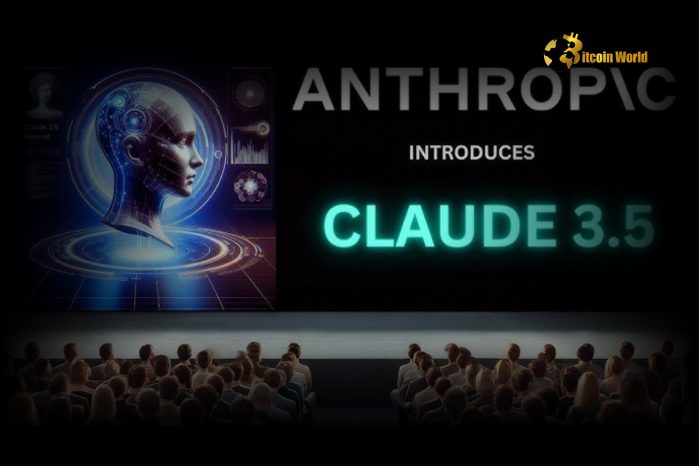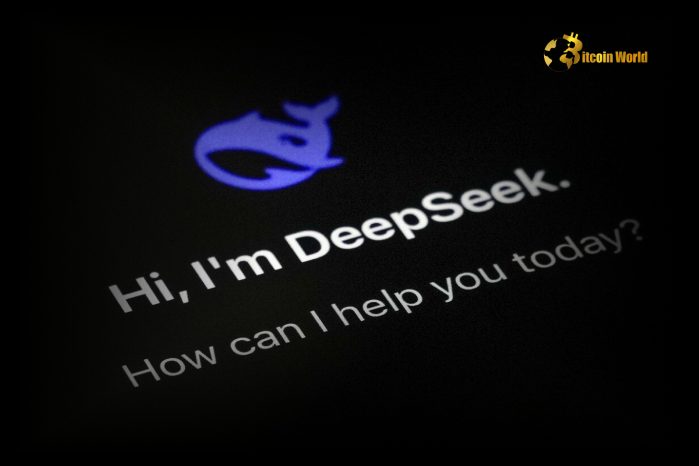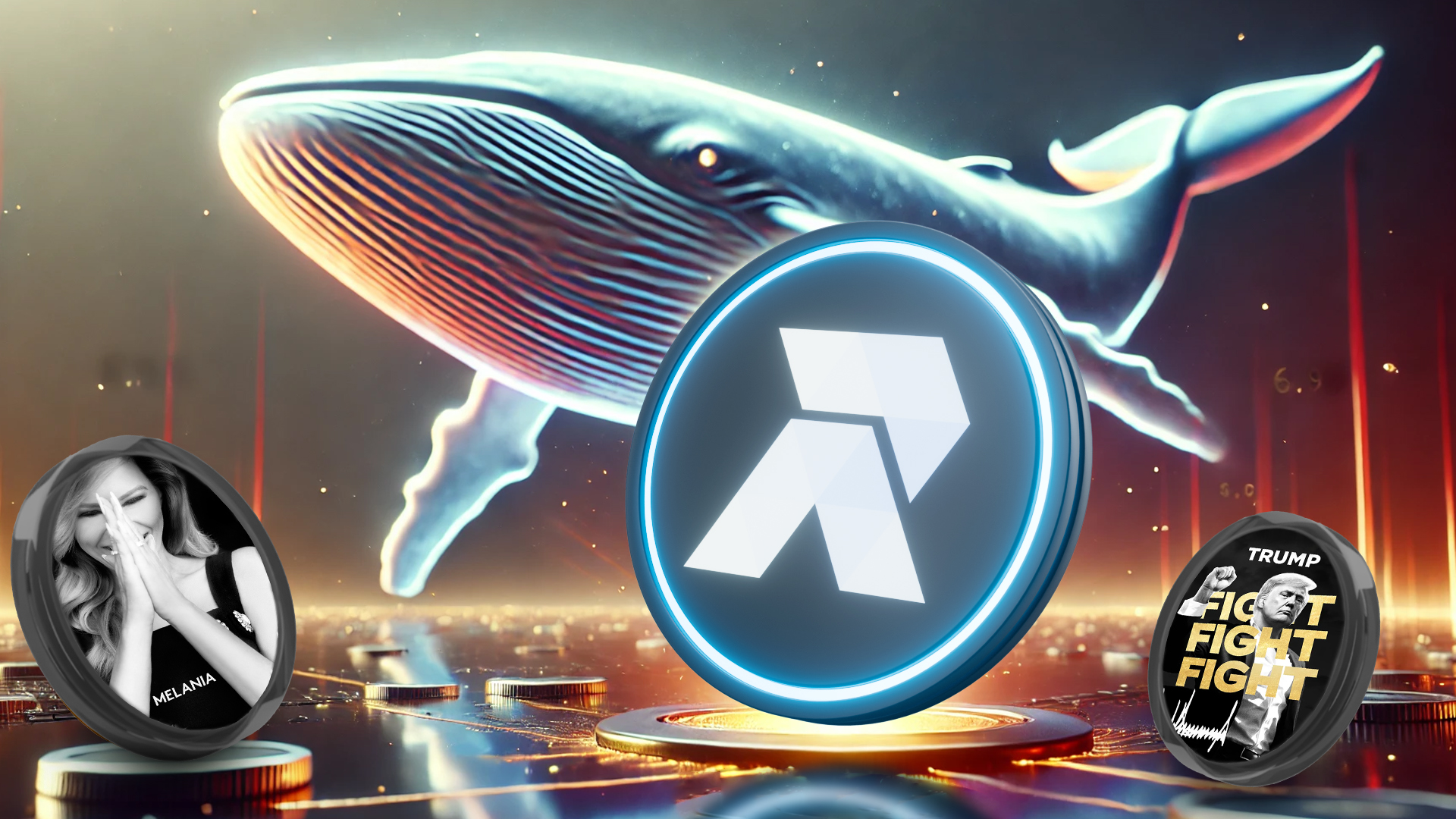
Hold onto your hats, crypto enthusiasts! The digital asset market is experiencing a dramatic twist. While headlines scream about significant outflows from digital asset investment products, a closer look reveals a fascinating divergence. Last week witnessed a staggering $508 million net outflow from these investment vehicles, marking the second week in a row of investors pulling back. But beneath the surface of these crypto outflows , a compelling narrative of altcoin inflows is unfolding. Unpacking the $508M Crypto Outflows: What’s Driving the Market Sentiment? According to CoinShares’ latest weekly fund flow report, the headline figure is undeniably the $508 million net outflow from digital asset investment products. This substantial movement raises eyebrows and prompts questions about investor sentiment. Are we seeing a broad retreat from the crypto space, or is there more to this picture than meets the eye? Let’s break down the numbers to understand the nuances of these crypto outflows . Here’s a quick snapshot of the key figures: Total Net Outflows: $508 million Consecutive Weeks of Outflows: 2 Source of Data: CoinShares Weekly Fund Flow Report This outflow suggests a cautious or even bearish sentiment prevailing among investors in digital asset investment products. However, to get a complete picture, we need to dissect where these outflows are concentrated and where the money is actually flowing. Bitcoin Outflows: The Lion’s Share of the Exit Delving deeper into the CoinShares report, it becomes clear that bitcoin outflows are the primary driver behind the overall negative figure. Bitcoin investment products alone experienced a massive $571 million in outflows. This overshadows the total net outflow figure and indicates a significant shift away from Bitcoin-centric investment vehicles. Why are we seeing such substantial bitcoin outflows ? Several factors could be at play: Profit Taking: Bitcoin has seen considerable price appreciation in recent months. Investors might be taking profits off the table, especially given market uncertainties. Market Rotation: The crypto market is dynamic. Investors might be reallocating capital from Bitcoin to other assets, seeking potentially higher growth opportunities or diversifying their portfolios. Macroeconomic Concerns: Broader economic uncertainties, inflation worries, and interest rate hikes can influence investor risk appetite, leading to outflows from perceived riskier assets like Bitcoin. Regulatory Uncertainty: Ongoing regulatory discussions and actions around cryptocurrencies can create market jitters, prompting some investors to reduce their exposure. It’s crucial to note that while bitcoin outflows are significant, they don’t necessarily signal a complete abandonment of the crypto market. The story becomes more interesting when we look at the performance of altcoins during the same period. Altcoin Inflows: A Beacon of Hope in the Digital Asset Space? While Bitcoin was experiencing outflows, a contrasting trend emerged in the altcoin market. Investment products focused on altcoins, including Ethereum, Solana, and XRP, collectively registered net inflows. This is a noteworthy divergence and suggests a shift in investor interest within the digital asset landscape. Despite the overall negative sentiment reflected in the total outflow numbers, altcoin inflows indicate pockets of bullishness and specific asset classes attracting investor capital. Leading the pack in altcoin inflows was XRP, which saw an impressive $38.3 million flow into its investment products. This highlights a strong investor appetite for XRP, potentially driven by factors specific to the XRP ecosystem, such as developments in its legal battles or advancements in its technology. Here’s a breakdown of the altcoin inflows: Altcoin Net Inflows (USD Million) XRP $38.3 Ethereum (Inflows – Figure not specified in source, but positive) Solana (Inflows – Figure not specified in source, but positive) Other Altcoins (Net positive inflows overall) The positive altcoin inflows , especially into XRP, Ethereum, and Solana, suggest that investors are not entirely retreating from the digital asset market. Instead, they may be strategically reallocating their investments, seeking opportunities in altcoins that they perceive as having higher growth potential or offering diversification benefits. Decoding Crypto Investment Trends: What Does This Divergence Mean? The contrasting trends of bitcoin outflows and altcoin inflows paint a complex picture of the current crypto investment landscape. It’s not simply a story of mass exodus, but rather a nuanced shift in investor preferences and strategies. These crypto investment trends highlight several key takeaways: Selective Investment: Investors are becoming more selective in their crypto investments. While Bitcoin might be facing headwinds, specific altcoins are attracting capital, indicating a more discerning approach to the market. Altcoin Season Potential: The inflows into altcoins could be an early signal of an “altcoin season,” where altcoins outperform Bitcoin. This is a recurring phenomenon in the crypto market, driven by various factors including technological developments, narrative shifts, and market cycles. Diversification Strategies: The divergence suggests investors are actively employing diversification strategies within their crypto portfolios. Reducing Bitcoin exposure while increasing altcoin holdings can be a way to manage risk and potentially enhance returns. Market Maturity: These trends could also indicate a maturing crypto market, where investors are moving beyond a purely Bitcoin-centric view and exploring the broader ecosystem of digital assets. Navigating Digital Asset Investment in a Shifting Market: Actionable Insights For investors trying to navigate these shifting crypto investment trends , here are some actionable insights: Stay Informed: Keep a close watch on market data, fund flow reports, and news related to both Bitcoin and altcoins. Understanding the underlying drivers of these trends is crucial for informed decision-making. Diversify Your Portfolio: Consider diversifying your crypto portfolio beyond Bitcoin. Explore well-researched altcoins with strong fundamentals and growth potential. Risk Management: Manage your risk effectively. Don’t put all your eggs in one basket. Allocate capital based on your risk tolerance and investment goals. Long-Term Perspective: Remember that the crypto market is volatile. Focus on long-term investment strategies rather than short-term market fluctuations. Due Diligence: Always conduct thorough due diligence before investing in any cryptocurrency. Understand the technology, team, use case, and risks associated with each asset. Conclusion: A Market of Contrasts and Opportunities The latest fund flow report reveals a crypto market characterized by contrasts. While the headline crypto outflows from digital asset investment products might seem concerning at first glance, the concurrent altcoin inflows offer a more nuanced perspective. The market is not simply retreating; it’s evolving. Investors are becoming more discerning, reallocating capital, and exploring opportunities beyond Bitcoin. This period of shift presents both challenges and opportunities for those willing to understand the underlying dynamics and adapt their investment strategies accordingly. The digital asset market remains dynamic and full of potential, even amidst periods of apparent outflow. To learn more about the latest crypto market trends, explore our article on key developments shaping Bitcoin price action.
Bitcoin World
You can visit the page to read the article.
Source: Bitcoin World
Disclaimer: The opinion expressed here is not investment advice – it is provided for informational purposes only. It does not necessarily reflect the opinion of BitMaden. Every investment and all trading involves risk, so you should always perform your own research prior to making decisions. We do not recommend investing money you cannot afford to lose.
BlackRock’s Potential Considerations for a Solana ETF Amid Growing Institutional Interest

The interest in Solana exchange-traded funds (ETFs) is heating up, yet BlackRock remains a notable absentee in this competitive landscape. Recent filings from institutions such as Franklin Templeton and Bitwise Bitcoin World

Revolutionary Claude 3.7 Sonnet: Anthropic Unveils Breakthrough Hybrid AI Model with Limitless Thinking
In the fast-paced world of artificial intelligence, where innovation is the name of the game, Anthropic has just dropped a bombshell. Imagine an AI that doesn’t just spit out quick answers, but actually takes its time, ponders, and ‘thinks’ deeply about your questions. That’s precisely what Anthropic’s new AI model , Claude 3.7 Sonnet, promises to deliver. For crypto enthusiasts and tech-savvy individuals who understand the power of sophisticated algorithms, this development is a game-changer. Let’s dive into why Claude 3.7 Sonnet is making waves and what it means for the future of AI interactions. Unveiling Claude 3.7 Sonnet: A New Era of AI Reasoning Model Anthropic is calling Claude 3.7 Sonnet the industry’s first “hybrid AI reasoning model .” But what exactly does that mean? Unlike typical AI models that offer a single approach to answering questions, Claude 3.7 Sonnet is designed to be versatile. It can provide both rapid, real-time responses and more considered, in-depth answers, depending on what you need. This is a significant leap forward, moving away from the often confusing model selection process that users currently face with many AI chatbots. Here’s a breakdown of what makes Claude 3.7 Sonnet stand out: Hybrid Reasoning: This innovative design allows the AI model to switch between quick and deep thinking modes within a single model. No more choosing between different models for different levels of complexity. User-Controlled Reasoning: You get to decide whether to activate the model’s “reasoning” abilities. This control lets you tailor the AI’s approach to the task at hand, whether you need a fast answer or a thoroughly considered one. Simplified User Experience: Anthropic aims to streamline AI interaction. Instead of overwhelming users with numerous model options, Claude 3.7 Sonnet offers a unified solution that adapts to various needs. How Does Anthropic’s Revolutionary Hybrid AI Reasoning Model Work? The core concept behind Claude 3.7 Sonnet is to mimic human-like thinking processes. Traditional AI models often rely on pattern recognition and quick data retrieval. However, reasoning models like Claude 3.7 Sonnet take a different approach. They break down complex problems into smaller, manageable steps. This process, inspired by deductive reasoning, allows the AI to explore different angles, consider various possibilities, and ultimately arrive at a more accurate and nuanced answer. Think of it like this: Feature Traditional AI Models Claude 3.7 Sonnet (Hybrid Reasoning Model) Reasoning Approach Direct, pattern-based response Step-by-step problem decomposition Thinking Time Fast, immediate answers Variable, user-controlled ‘thinking’ duration Model Selection Multiple models for different tasks Single, versatile hybrid model Output Quality Good for simple queries Enhanced accuracy and nuance for complex questions This method is especially beneficial for tasks requiring in-depth analysis, such as complex coding problems or intricate strategic planning. For those in the crypto space dealing with complex market analysis or smart contract development, the potential of a robust reasoning model is immense. Claude 3.7 Sonnet vs. The Competition: Pricing and Performance Benchmarks While Claude 3.7 Sonnet boasts impressive capabilities, it’s essential to consider its cost and performance relative to other AI models in the market. Anthropic has priced Claude 3.7 Sonnet at $3 per million input tokens and $15 per million output tokens. Let’s see how this stacks up against competitors like OpenAI and DeepSeek: Model Input Tokens (per 1M) Output Tokens (per 1M) Type Claude 3.7 Sonnet $3.00 $15.00 Hybrid Reasoning OpenAI o3-mini $1.10 $4.40 Reasoning Model DeepSeek R1 $0.55 $2.19 Reasoning Model Claude 3.7 Sonnet is positioned as a premium offering, reflecting its hybrid nature and advanced capabilities. While models like o3-mini and R1 are cheaper, they are strictly reasoning models and lack the hybrid versatility of Claude 3.7 Sonnet. Anthropic argues that the enhanced performance and flexibility of their AI model justify the higher price point, especially for users who need a comprehensive AI solution. Performance benchmarks further support Anthropic’s claims: SWE-Bench (Real-world coding tasks): Claude 3.7 Sonnet achieved 62.3% accuracy, outperforming OpenAI’s o3-mini (49.3%). TAU-Bench (Simulated retail interaction): Claude 3.7 Sonnet scored 81.2%, surpassing OpenAI’s o1 model (73.5%). These results indicate that Claude 3.7 Sonnet excels in real-world applications, particularly in complex tasks that demand robust reasoning and adaptability. Anthropic’s Vision: AI That Thinks Like You, But Better? Anthropic AI isn’t just aiming for incremental improvements; they’re envisioning a future where AI seamlessly integrates into our daily lives, understanding our needs and adapting to them intuitively. Diane Penn, Anthropic’s product and research lead, highlighted this vision, stating that eventually, Claude should automatically determine the optimal “thinking” time for each question, much like humans do. This approach is reflected in Claude 3.7 Sonnet’s “visible scratch pad” feature. Users can actually see Claude’s thinking process for most prompts, offering unprecedented transparency into how the AI model arrives at its conclusions. While some parts of the process might be redacted for safety reasons, this level of visibility builds trust and provides valuable insights into the AI’s reasoning. Claude Code: An Agentic Coding Tool for Developers Alongside Claude 3.7 Sonnet, Anthropic AI is also launching Claude Code, an agentic coding tool currently in research preview. This tool is designed to empower developers by allowing them to interact with Claude directly from their terminal. Imagine being able to: Analyze Codebases: Use simple English commands to understand project structures. Modify Code: Make changes to codebases using natural language instructions. Automate Tasks: Test for errors and push code to repositories directly through Claude Code. Claude Code promises to streamline the development process, making it more efficient and accessible. For developers in the crypto space working on blockchain projects, smart contracts, or decentralized applications, this tool could significantly enhance productivity and simplify complex coding tasks. The Road Ahead: Anthropic Leading the AI Revolution? Anthropic AI is making a bold move by releasing Claude 3.7 Sonnet and Claude Code. In a market where new AI models are constantly emerging, Anthropic is aiming to lead the pack, shifting from a historically cautious approach to a more assertive stance. However, the competition is fierce. OpenAI is expected to release its own hybrid AI model soon, as hinted by CEO Sam Altman. The race for AI supremacy is heating up, and Anthropic’s latest innovations are a clear signal that they are ready to compete at the highest level. The question remains: Can Anthropic maintain its lead? With Claude 3.7 Sonnet’s groundbreaking hybrid reasoning capabilities and Claude Code’s developer-centric tools, Anthropic AI is certainly positioning itself as a major player in the AI revolution. For those in the cryptocurrency and broader tech world, keeping a close eye on Anthropic’s advancements is crucial, as they are shaping the future of how we interact with artificial intelligence. To learn more about the latest AI market trends, explore our article on key developments shaping AI features. Bitcoin World











